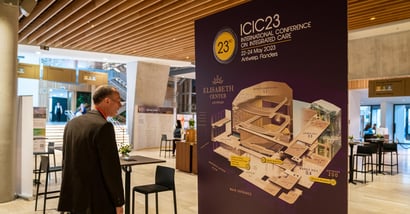“UZ Brussel WLTM patient”
The UZ Brussel arrived at the same conclusion, having found that questionnaires issued periodically provide less hands-on information, and often present too great a hurdle for patients. What's more, structuring them is inconvenient, and it's incredibly time-consuming to process the results.
That's why it makes sense that the UZ Brussel decided to try and find a simpler and quicker means of accumulating as much relevant feedback as possible, from as many patients as possible.
Möbius recommended the Hello Customer feedback tool. After a specific appointment at the hospital, the patient is sent an email requesting that they answer a few simple questions. Just like in the AZ Sint-Rembert hospital in Torhout, also in the UZ Brussel, the usage of the tool results in a much higher response rate compared with classic questionnaires.
The next step is for the quality manager or end user at the UZ Brussel to personally respond to the comments, or, where the feedback is positive, an automatic response can be sent via the tool without any additional hassle. Everything takes place in real time so that all the results are immediately visible to the quality manager and end user on the dashboard.
It sounds simple, right? Maybe, but whenever a new tool is introduced, there's always a learning curve. Möbius assisted the UZ Brussel with the tool's implementation and use.
Hello Customer: Möbius implementation support
How exactly did we get started? Our first task was to map the journey patients go through in the hospital. This gave us a complete picture of the journey that in and outpatients make from hospital check-in to check-out. What's also important: based on these patient journeys we were able to identify a few indicators that were ideal for surveying the patient experience.
The phrasing of the question is crucial. The feedback tool works with one open-ended question and one closed one. We joined the UZ Brussel in their search for the best, most easily-accessible formulation for each question.
After the end of a short workshop, we continued providing support to the employees through coaching. The point of this was to make sure that they would be able to use the tool on their own, correctly interpret data on the dashboard and get the most out of the tool.
It goes without saying that the results aren't limited to just the UZ Brussel patient satisfaction team; they ultimately serve to improve the quality of care and services.
Think fast
For the time being, only patients attending consultation appointments in the various departments are sent emails via Hello Customer. Based on how things develop further, the UZ Brussel may decide to extend the survey to other touchpoints, such as hospitalization. It's also possible to extend the access rights to the dashboard, so that departments heads are also able to view and use the results.
As icing on the cake, the tool has an optional functionality also capable of retrieving data on the tone and mood of the feedback. It's all much more innocent than it sounds ... Developments in the field of smart survey tools are pushing forward. In fact, they're developing at breakneck speed, but really it's just making our lives better, right?
Are you interested in finding out what patients think about the quality of your hospital? Ask us a question or get in touch with one of our Healthcare experts.







